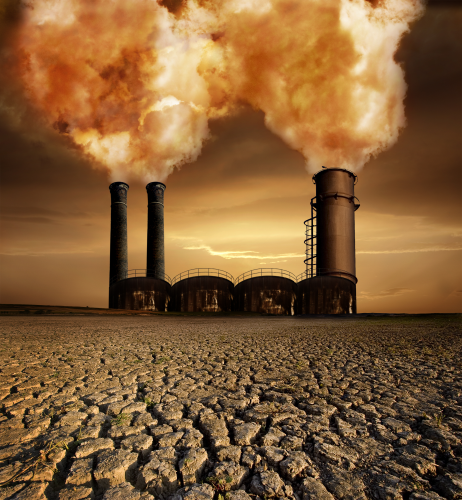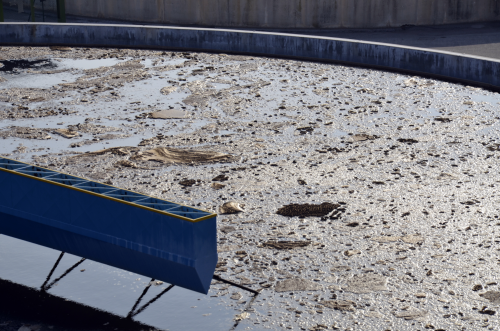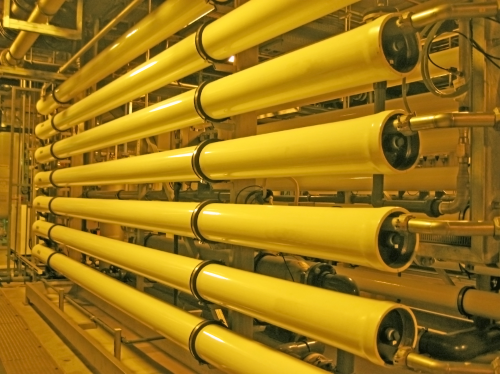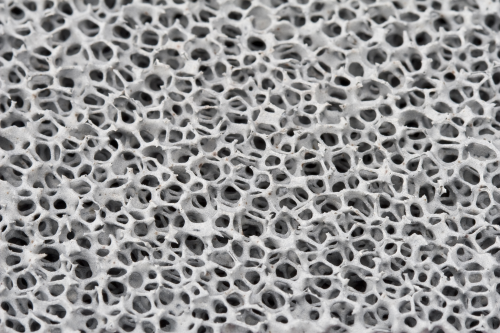



The assassination of an American President will always be more easily recalled than the birth of a technical journal in the UK, but 1963 was a good year for a journal to be born, in company with Harold Wilson’s ‘white heat of technology’ speech, and the Robbins report, which led to a massive expansion in higher education. The economy was strong, with residual wartime cares left well behind. The filtration industry was in a good position to capitalise on the resultant market growth, with its eager acceptance of new porous materials and polymeric fibres as the bases for new or improved filter media. It should be remembered that, however complicated the mechanical structure of a filter might be, almost all filters are no more than devices for holding a piece of porous filter medium across a flow of a suspension of particles in a fluid, so as to retain some or all of those particles. The filter medium is the key component in any filtration process, while the mechanical complexity of the filter is an indication of the difficulties involved in recovering the separated particles from it. As new materials became available during the period, they were rapidly taken up by the makers of porous material for use in filtration, whether for their increased strength, or better corrosion resistance, or, and most likely, for their better filtration performance. Before the mid-point of the twentieth century, the filtration industry had managed very well for filter media by using natural materials: wood fibre, cotton and wool (and, to a lesser extent, silk), all supplemented by metallic wire mesh to give better process fluid resistance. These materials, whether wet or dry laid as papers or felts, or woven into cloth, provided a wide range of filter media, able to deal with a very wide range of separation problems, a range that has continually widened, as industrial and commercial processes have developed. One of the advantages of the filtration industry is that its equipment is found in almost any process that uses liquid or gas flows, in order to recover suspended solids or clean the fluid, such that the process performance is improved. As a result, the business is a strong one, able to offset a recession in one part of the global economy, with expansion in another.
Driving forces
As with any marketplace, that served by the filtration industry has grown as the result of the actions of a set of driving forces, which are either common to all industries, or specific to the filtration sector. The common drivers are the economic and environmental ones, of which the environmental forces have been increasingly important over the past fifty years. These environmental driving forces are well known and reasonably well understood, their prime embodiment being as the Millennium Development Goals of the United Nations, agreed in 2000, which set standards for sustainable living, for the abatement of global warming, and for the control of environmental destruction. These targets are still far from being achieved, but at least the recycling of waste materials has created good business for the filtration sector, and there are other opportunities created by environmental pressures (such as effluent treatment and waste minimisation processes of all kinds). Two of the common drivers that have particular importance to the filtration business are the need for increases in energy efficiency (filtration, by definition, consumes considerable amounts of energy in the passage of the fluid through the filter medium), and improvements in life-cycle costs (most filters have a moderate to high consumption of replaceable media during their life time). The two most important technical driving forces, that are specific to the filtration industry, are the continual and growing demand for ever finer filtration, and the need for filters of gases or liquids to be able to cope with hotter process fluids. Almost all end-users of filtration are asking for more efficient processes, in which the levels of separation are set at ever smaller particle size cuts, whether for gas or liquid filtration. This is as true for the relatively coarse clarification of hydraulic system fluids as it is for the precise needs of semi-conductor washing in the electronics industry or the production of vaccines in a pharmaceutical factory. The most important equipment development associated with the need for finer filtration has been that of the membrane, either as an organic polymer or as one of several forms of inorganic material. The history of the membrane as a separating medium occupies almost exactly the 50-year timescale of this article. Increasingly, filter media are being made from polymeric fibres, and a parallel development of similar magnitude has been the ability to spin (extrude) polymers into filaments with a very fine diameter. The drive to cope with hotter fluids includes the chemical industry’s wish to be able to handle hot liquid suspensions, as well as the wider industrial application in the treatment of hot exhaust gases. These are two distinct requirements, with hot liquids looking for separations in the 100–200°C range, while hot gas filtration is more likely to demand satisfactory operation closer to 1000°C. Exhausts, usually laden with waste solid particles, must be filtered to satisfy environmental needs for atmospheric protection, and also to enable them to be passed through a heat exchanger for energy recovery. Diesel engine exhaust cleaning is adding a third major hot gas treatment requirement, with unburned diesel fuel particles now identified as a serious pollutant. Woven wire mesh, especially when sintered to preserve its stability, has been developed over the last fifty years to provide filtration for moderate temperature gases, but the really hot processes are now being served by ceramic media. These two drivers - fine filtration and hot gas cleaning - are now being brought together in the ceramic membrane.
Resulting developments
Most of the driving forces just described have been at work in the marketplace for many years. The impact on the filtration industry, over the past 50 years, has been a succession of developments intended to improve process efficiencies and economics. These have included: • expansion of the use of organic, polymeric membranes in the whole range of filtration equipment; • acceptance of an increasing range of • organic polymers as efficient filter media; • development of inorganic membranes, • especially ceramics; • spread of cross-flow (thin layer) filtration, • as a means of operating membrane processes with reduced fouling; • availability of membranes able to operate • in the ultrafiltration, microfiltration and nanofiltration ranges, as well as their original use in reverse osmosis; • development of surface treating processes, • such as thermal bonding or coating, able to modify the filtration performance of a woven or felted material; • development of spunmelt (extruded • filament) fibrous media, progressively as spun bonded, melt blown, flash spun, and, most recently, electrospun materials; • the use of multi-layer composite media, enabling the production of strong media with a good filtration performance; • the production of multi-component fibres, • to give a range of fibre properties; and • the preparation of combination media, able • not only to filter, but also to remove odour or colour, or to kill bacteria. The first five of these developments, those concerned particularly with membrane separations, are covered by this article, and the remainder by a succeeding piece.
Membrane systems
The membrane, as used in reverse osmosis in what looked like a filtration process, first attracted notice in the early 1960s. This was actually in the desalting of brackish and salt waters, to produce drinking water, which it did, reasonably efficiently, but at high cost, and with the particular operating problem of fouling (blocking of the upstream surface of the medium by a deposit of slimy solids). Despite its problems, the process looked extremely attractive and it became the subject of intense development from the mid-1960s onwards. A prime target for development was the elimination of the fouling layer, and this remains, even today, as a problem to which there is as yet no completely satisfactory answer. One proposed treatment is thorough pre-filtration of the feed liquid, by removal of the traces of suspended solid – this certainly delays complete blockage, but does not prevent it. Another proposal involves the careful selection of the material from which the membrane is made, coupled with the dosing of the membrane surface with adsorbed or chemically combined agents that reduce or eliminate the attractiveness of the membrane surface for the foulant. A different approach to fouling reduction is the physical one of causing the suspension flow to scour the membrane surface free of solid deposit and so prevent the fouling layer from forming. So far, even the scouring process has been only partially successful, but, like the other anti-fouling methods, it does extend considerably the time intervals between blockages. However, the development of the scouring method for keeping a membrane relatively free of blocking, has led to a completely new way of operating the filtration process, in which the feed suspension flows, not perpendicular to the membrane (termed ‘through-flow’ or ‘dead-end flow’), but parallel to it (called ‘cross-flow’, ‘tangential-flow’, or ‘thin-layer filtration’). The cross-flow mode can be created by the way in which the suspension is caused to flow through the filter, or by having one side of the flow channel vibrate or rotate, with respect to the other, inside the filter. Most membrane processes now operate in cross-flow mode, and many other process systems now do so as well, even where membranes may not necessarily be used. The costs of membrane processes have reduced considerably over the period of the half-century being considered here, and, as a natural result of that reduction, membranes have found wide application throughout industry and commerce. Membrane processes have also expanded into parts of industry other than water treatment because the membranes have become ‘looser’ with the gradual switch to ultrafiltration and now to microfiltration, for less demanding applications – which also mean lower operating costs because the operating pressures are lower. The idea of the membrane, coupled with the ability to make porous materials with cut points in the membrane range, has led to the production of membranes from inorganic materials, which has extended the range of corrosion and abrasion resistant membranes. Another system development, deriving from the ability to produce low pressure operating systems using microfiltration membranes, has led to the Membrane Bioreactor (or MBR), which combines an aerated reaction chamber for the biological destruction of suspended waste particles, with a low pressure microfiltration membrane separation system that continually removes the surplus waste particles. This system, which in fact operates at a hydraulic head of only 1-2m, has proved to be so successful that it is being applied to many other process situations that can employ biological processing.
Ceramic filter media
The other major development to be covered in this article is that used to filter hot liquids or gases, for which ceramic filter media provide, at first thought, the ideal material for removing pollutants from waste gas or liquid streams. Ceramics, in fact, are used for filter media under a number of circumstances, including crude stoneware filters for coarse filtration of water, candle filters to clean exhaust gases, and membrane media using a layer of very fine powder laid down on a surface within a porous monolith structure or an array of tubes. Stoneware filters have barely changed in 100 years, let alone 50, but the other two types have changed, in response to the hot fluid driving force. Candle filters have been used for a long time for hot gas filtration, but the media are brittle and prone to crack or fracture in use. Developments are under way to produce candles from ceramic fibres that are fracture resistant, and should be able to filter hot exhaust gases to a fine enough level. The ceramic membranes are of interest for two reasons: they can be used for aggressive operating conditions (hot and corrosive), and they can produce a good filtration performance while standing up to vigorous mechanical or chemical cleaning. Their integral strength suggests that they could be part of a low cost water cleaning system for distribution to impoverished or disaster areas.
Read 50th Anniversary: Half a century of developments in filtration - Part 2
Read 50th Anniversary: Half a century of developments in filtration - Part 3




